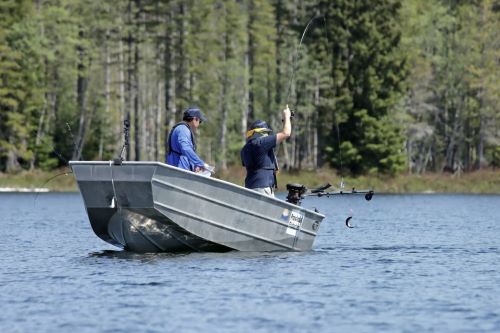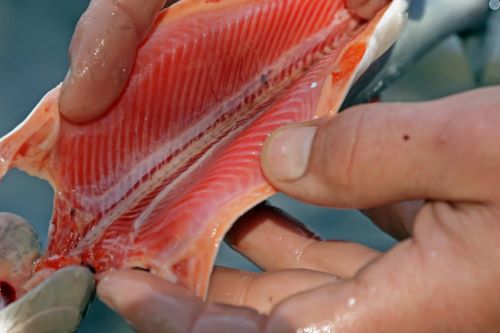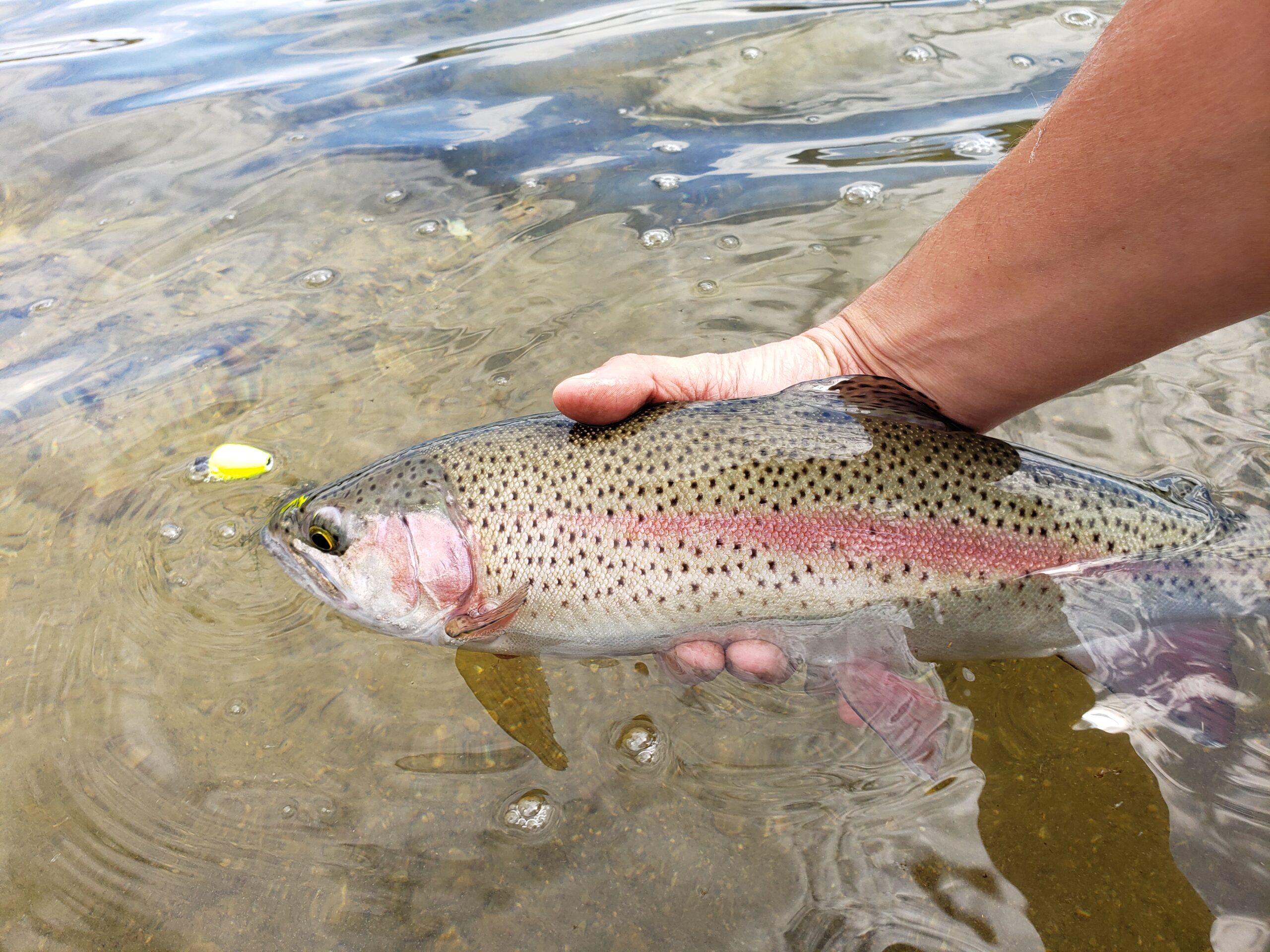Until recently, Vancouver Islanders seeking small-lake kokanee fishing had to go to the British Columbia mainland. However, the Freshwater Fisheries Society of BC has been working with provincial fisheries staff on possible locations for kokanee fisheries on Vancouver Island. After a couple of years of testing, we are happy to report that two small lakes on the island have now been established as stocked kokanee lake fisheries.
In 2020, the Province started stocking kokanee into Shelton and Beavertail lakes to determine if these fish would survive and grow large enough to support a fishery. The kokanee stocked into these lakes are non-reproductive, and not able to establish a population in either location.
Shelton Lake has been part of a successful lake-fertilization program – initiated by the Province almost 10 years ago. The Society has helped to support this work, to increase productivity, and thus fish growth, in some small lakes in the region. Lakes on the coast tend to have naturally low productivity because high rainfall rapidly washes nutrients out of the system. Adding nutrients to a lake, or “fertilizing” it, can improve aquatic plant production, leading to more zooplankton and more food for fish. The addition of kokanee to Shelton Lake will build on the successes of the fertilization program at this location.
Beavertail Lake contains other salmonids already, including cutthroat trout, Dolly Varden, and stocked rainbow trout.
Recent assessments have indicated that while some tweaking in stocking would help increase fish size, kokanee appear to be doing well in both these coastal systems. In fact, some fish are already reaching sizes of up to 30 centimetres. As fish put on more growth this summer, this size is expected to increase by three to five centimetres, making these fisheries even more attractive to anglers.


What do kokanee offer the angler?
Kokanee, the freshwater form of sockeye salmon, spend almost their entire lives in a single lake. Until they mature, they retain an attractive silvery colouration.
Kokanee are fun fish to catch. Depending on the season, these feisty fish can put up a good fight. As an added bonus, they are delicious table fare, and many anglers prefer the taste of kokanee over trout. Harvest is encouraged to maintain fish densities and a desirable fish size in the lakes. If the population becomes too abundant, fish size will decrease due to competition for food.
Kokanee have different feeding preferences compared to trout. Kokanee are pelagic – for much of the year, they are out in the middle of the lake, where they are found at various depths (depending on temperature and other factors) feeding on zooplankton such as daphnia. Because they prefer cooler waters, they tend to go deeper during warmer summer months in search of lower temperatures. However, they may move into shallow areas at certain times in the spring when insect hatches abound.
In the B.C. Interior, winter ice-fishing for kokanee is a hugely popular activity. Here on the coast, where lakes generally remain ice-free, we are still in the early days of determining what sort of experience winter fishing for kokanee might provide, however it is likely that these fish will be catchable all year, including the winter. We will certainly be taking notes as the fishery develops.


Tips for catching kokanee
Given the deeper waters that kokanee prefer, anglers will find that a boat is essential. Once on the water, though, kokanee are accessible most times of the year, even to the novice angler. Kokanee tend to be most active at dawn and dusk during warmer months, but can be available throughout the day.
Several approaches to catch kokanee have so far proven successful in Shelton and Beavertail lakes. A classic set-up is to troll a kokanee lure with corn-baited hook behind a small dodger or micro flasher off a downrigger, or simply drop a two-ounce weight with a worm on a hook down to where the fish are. Check out Nick Basok’s Guide to Trolling for Kokanee Salmon in Lakes, or read Mike Ramsay’s blog on fishing for kokanee in spring and summer for additional suggestions to improve your likelihood of success. While the latter article refers to the Interior’s small lakes, much of the information is transferable to the coast.
Accessing Vancouver Island’s new kokanee lakes
Shelton Lake is located 25 km west of Nanaimo and can be accessed off Nanaimo Lakes Road via M Branch (1 km) and then G Branch (3.5 km to lake). About an hour’s drive from Nanaimo, Shelton Lake sits in the scenic headwaters of the Englishman River, with the majestic mountains of the Vancouver Island Ranges as a backdrop. A cartop-style boat launch is available at the southern end of the lake.
Beavertail Lake is located 20 km west of Campbell River (30-minute drive) and can be reached via the well-maintained Elk River Mainline gravel road 7 km from highway 28 (Gold River Highway). Recent improvements at Beavertail Lake by the local Campbell River Fish and Wildlife Association include the addition of a fishing dock and day-use facilities such as picnic tables, firepits, and an outhouse (please help keep this site clean and tidy as it is all volunteer maintained). This pretty little lake in a wilderness setting makes for a great family daytrip.
Take note
Before you go, be sure to look into the angling regulations for these lakes. Currently, there are no lake-specific regulations for either of these lakes, and the daily quota for kokanee in lakes is five fish. For more information, please see the regulations.
Good luck, have fun, and let us know how you did if you’re on these lakes this year!
Author: Sue Pollard, Freshwater Fisheries Society of BC
